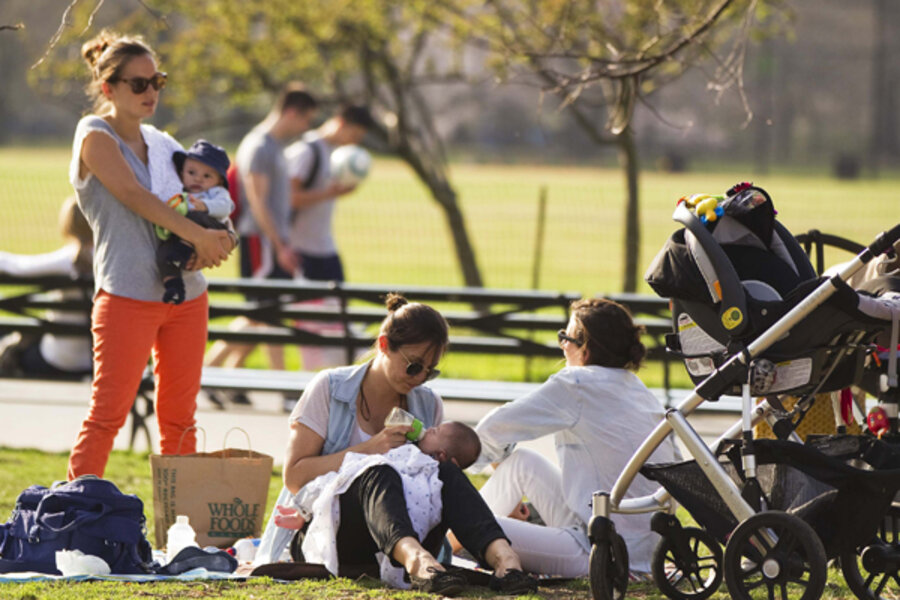More than half of US babies now minorities, US Census reports
Loading...
America’s minorities are slowly becoming the majority.
For the first time, more than half of children in the United States under the age of 1 are members of minority groups, the US Census Bureau reported in data released early Thursday.
The agency’s estimates show that as of July 2011, 50.4 percent of the nation’s under-1 babies were minorities (considered anyone who is not non-Hispanic, single-race white).
That is up from 49.5 percent in the 2010 Census.
The under-5 population is also moving toward “majority-minority,” with 49.7 percent in 2011 considered to be members of minority groups, up from 49.0 percent in 2010.
Overall, minorities constitute more than one-third of the US population.
“It really is an interesting time. We knew this was coming, but it’s just one more symbol of how America is changing,” says Kenneth Johnson, a senior demographer at the University of New Hampshire’s Carsey Institute.
America’s youngest residents have been shifting toward majority-minority for some time, and several states – California, Texas, New Mexico, Hawaii – and the District of Columbia are already majority-minority.
A combination of factors, including higher minority birthrates and higher death rates for whites, are driving the shift.
Between 2000 and 2010, Mr. Johnson notes, the number of non-Hispanic white women in prime childbearing years (between the ages of 20 and 39) dropped by 2.5 million, or 9 percent. During that time, the number of minority women in the same age group increased by 3.2 million, or 22 percent.
Add to that the fact that minority women, particularly Hispanics, tend to have more children, and at younger ages, than non-Hispanic whites, and the trends are not surprising.
At the same time, more white people are dying. In the period between July 1, 2010, and July 1, 2011, not only were more than 50 percent of the births minority, but nearly 80 percent of the deaths were non-Hispanic whites.
Other news from the updated census data:
• There were 114 million minorities in 2011, or 36.6 percent of the US population. That’s a rise from 36.1 percent in 2010.
• Hispanics remain the most populous minority group, making up 16.7 percent of the nation’s total population (up from 16.3 percent in 2010). They were also the fastest growing, with their population increasing by 3.1 percent since 2010.
• More than 11 percent of America’s counties were majority-minority as of July 1, 2011. Nine of those counties have achieved that status since April 1, 2010.
• The nation is slowly aging. The number of people ages 65 and older increased from 40.3 million in 2010 to 41.4 million in 2011, while the number of children under 18 declined by about 200,000 to 74.0 million in 2011. There was also a small uptick in America’s median age, from 37.2 years in 2010 to 37.3 in 2011.
The growth in minorities varies significantly by region. “It really differs a lot where you are,” says Johnson. Still, he notes, some of the trends show that minority populations are slowly becoming more dispersed, with the fastest minority population growth occurring in suburban and rural areas.
The implications, over time, may affect everything from school services to the America’s racial attitudes.
Hospital maternity wards are likely to need more language expertise, says Johnson, and more schools may need to add programs for English-language learners.
On the positive side, he adds, data show that children who grow up exposed to ethnic and racial minorities tend to get along better as adults. And the higher number of minority births is also helping to slow America’s aging trends.
“There are positives; but especially for communities that aren’t used to it, it’s a big change to make,” says Johnson. “The big hope is that America will change in its attitudes from the bottom up, just as it’s changing in its diversity.”








